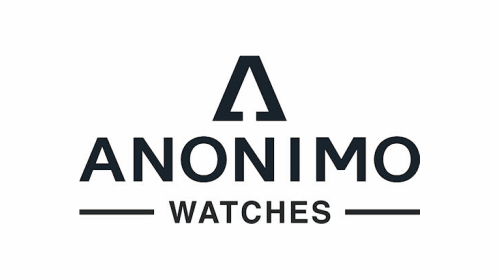HELSINKI, Finland — Keijo Paajanen was bewitched by a watch.
So much so that his life became deeply intertwined with the Vulcain Cricket, a Swiss timepiece known as the first mass-produced mechanical watch to successfully incorporate an alarm.
But there was another part of the watch’s past that attracted Mr. Paajanen even more: Released in 1947, it has been presented to many American leaders, earning it the nickname “The President’s Watch.”
Mr. Paajanen grew up in the Finnish capital, the son of a jewelry store owner, and lived and worked here until his death last year at 54. But were it not for him, a tradition of presenting the watch to U.S. presidents might have ended, too.
Starting in 1988 with President Ronald Reagan, who stopped in Finland en route to Moscow, Mr. Paajanen sent or personally presented the watch to seven of the 11 American heads-of-state known to have owned the model — almost every one from Truman to Trump.
In doing so, he honored a tradition that began in 1953 with President Harry S. Truman, who received a 14-karat gold Cricket from the White House News Photographers Association on his last day in office. It was engraved “One More Please,” a phrase often shouted at presidents when they pose for photographs.
“What Keijo made clear to me,” James Henderson, a watch brand consultant, wrote in an email, “was that his family felt very, very strongly about wanting to connect with the U.S. on some level, and that they loved the idea of the tradition.”
The two men met in the late 1990s in Helsinki, where Mr. Henderson was teaching English. With a couple of hours to kill before his next class one day, Mr. Henderson popped into the Paajanen family store on a whim, having spotted a brochure for “The President’s Watch” in the window.
“I went in to get a closer look,” Mr. Henderson wrote. “I proceeded to bore him for the next 30 minutes with questions, and walked out obsessed with the desire to buy a Vulcain Cricket.”


President Truman’s Vulcain Cricket watch is in the Truman Presidential Library and Museum in Independence, Mo. Credit...Photographs, via Harry S. Truman Presidential Library
The link between the Cricket and the Oval Office had faded in the 1970s — no one seems to know why.
But the idea to revive it was settled during a meeting in the 1980s that involved Mr. Paajanen; his father, Jouko, and Michel Ditisheim, whose father, Robert, invented the Cricket.
According to Rauno Paajanen, Mr. Paajanen’s brother, the Paajanens had approached Mr. Ditisheim because they admired the tradition — and considered Finland’s geographic location an ideal place to reintroduce it because, at the time, U.S. presidents often stopped in the country en route to diplomatic meetings in Russia.
The Paajanens ordered several watches — the model then was a simple timepiece with an off-white dial, a round gold-plated case and a leather strap. (Vulcain now has three collections in its 50s Presidents range, with watches selling for 4,340 euros to 44,800 euros, or $5,130 to $52,960.)
The family always paid for the gift watches, Mr. Ditisheim wrote in an email, and while Vulcain was aware of the presentations and the resulting publicity, the Paajanens were never compensated.
Following the first delivery to Mr. Reagan at the U.S. embassy, Mr. Paajanen dispatched a Cricket to his successor, George H.W. Bush, who visited Helsinki in 1990. And President Bill Clinton left the embassy with a watch, during a 1997 visit. (Jelena Virolainen-Paajanen, Mr. Paajanen’s former wife, wrote in an email that a customer of the family jewelry store with connections to the embassy served as a contact, helping Mr. Paajanen deliver the gifts. “I remember the first time, there was like a week’s time to get the watches through all the security checks, and the embassy did not promise anything,” she wrote.)
Mr. Paajanen personally presented Crickets to two presidents after they had left office: Jimmy Carter in 1997 and Gerald R. Ford in 1995.
Jouko Paajanen died in 2009, but Keijo continued the presentations, shipping a watch to Stockholm in 2013 for President Barack Obama, who was meeting with President Sauli Niinisto of Finland. (And a watch sent to Vice President Joe Biden in 2011 turned out to be the only gift, valued at $800, reported on his annual financial disclosure form that year.)

Credit...via James Henderson
The Paajanens’ tradition has been written about often by watch journalists and made newspaper headlines in Finland on several occasions — most recently in 2018, when Mr. Paajanen received a signed thank-you letter from President Trump.
Such letters — one from each leader who received a watch, including Mr. Biden — belong to a collection now in the care of Rauno Paajanen.
“Keijo was very proud to do this positive thing on behalf of our country,” he wrote in an email. His brother’s admiration for the United States, he added, stemmed from Finns’ pro-American stance rooted in Finland’s strained history with neighboring Russia.
Some of the letters go well beyond the standard official acknowledgment. Mr. Carter, for example, sent a handwritten note warmly thanking Mr. Paajanen. “Also, it was a pleasure to meet you at our ambassador’s residence in Helsinki earlier this month,” it read.
Mr. Paajanen described the encounter in an interview with Mr. Henderson for his watch blog, Tempus Fugit: “He was such a nice person. I also met his lovely wife Rosalynn.”


It is unknown whether Mr. Carter actually wore the watch, but some other presidents clearly adored it. Mr. Johnson so loved his Vulcain Cricket, he bought 200 for friends. And President Dwight D. Eisenhower’s Cricket, some watch historians say, famously erupted in chirps during a meeting — on whether to raise tariffs on Swiss watches.
President Richard M. Nixon, also a fan, enclosed a letter of praise for the watch when he shipped his model to Switzerland in 1960 to be serviced, according to online histories.
“It has given excellent service over the past five years and has served as my alarm clock around the world,” wrote Mr. Nixon, who received his in 1955 from the National Association of Watch and Clock Collectors.
Vulcain was founded by the Ditisheim family in 1858 in La Chaux-de-Fonds, in the Neuchâtel mountains of Switzerland. The manufacturer originally specialized in pocket watches, turning its attention to wristwatches in the 1940s. The idea of creating a wristwatch with an alarm then obsessed Robert Ditisheim, and he spent seven years developing the technology.
The solution was to create a separate chamber within the watch case for a tiny hammer that, when it struck a membrane, produced a shrill chirp — a sound that gave the watch model its name.
Mr. Ditisheim also perforated the case back, improving the audibility of the 25-second alarm, so wearers for the first time in horological history could be reminded to attend business meetings and dentist appointments.
It “soon became famous, especially in the U.S., where people are practical and appreciate having a ‘secretary on their wrist,’” Michel Ditisheim wrote. That, and the presidential connection, turned the Cricket into the company’s flagship model and it still dominates its history today.
Over the years, Mr. Paajanen never lost his passion for the Cricket — he visited Mr. Ditisheim in Switzerland on Feb. 7, 2019, to order more watches that he planned to dispatch to future American leaders. He died of a heart attack nine days after the meeting.
(Carla Duarte, finance and administration manager at Vulcain, said recently that the company intends to send a Cricket to the winner of the 2020 vote.)
Mr. Paajanen’s devotion to the Cricket lives on in the memories of friends and family, among them Mr. Henderson, who wrote about their friendship on his blog. (After they met, he did buy a Cricket from Mr. Paajanen and had it shipped from Finland to California.)
“I think Keijo made watches human,” Mr. Henderson wrote. “He was a passionate storyteller, and he was one of those rare people who could truly impart the romance and beauty of an inanimate object, and bring it to life.”
A version of this article appears in print on Nov. 4, 2020, Section S, Page 1 in The New York Times International Edition.













